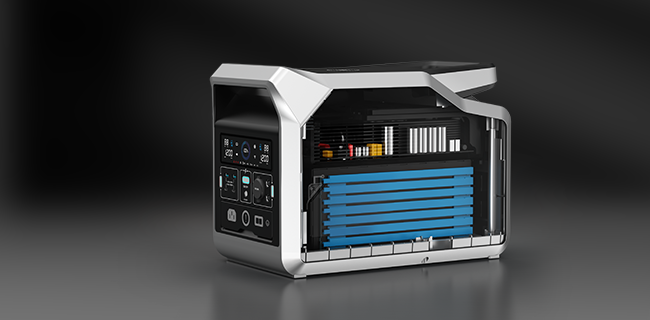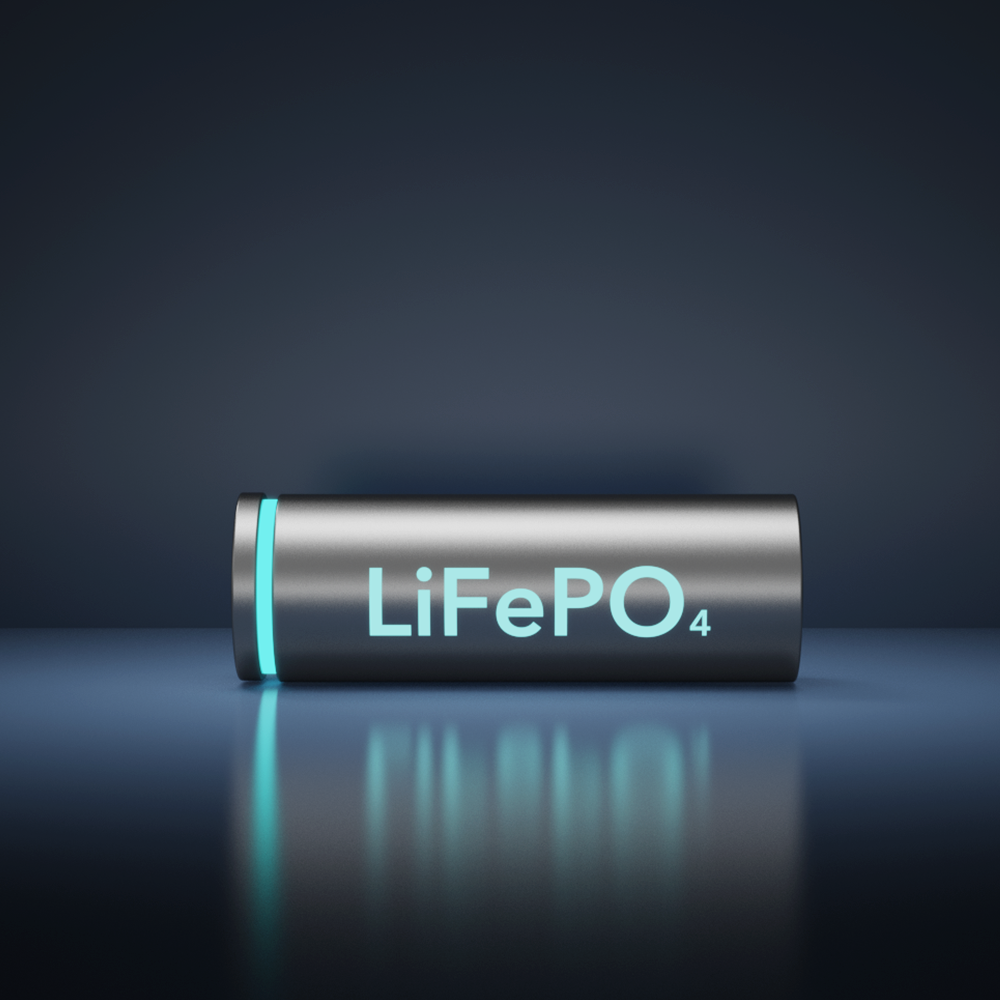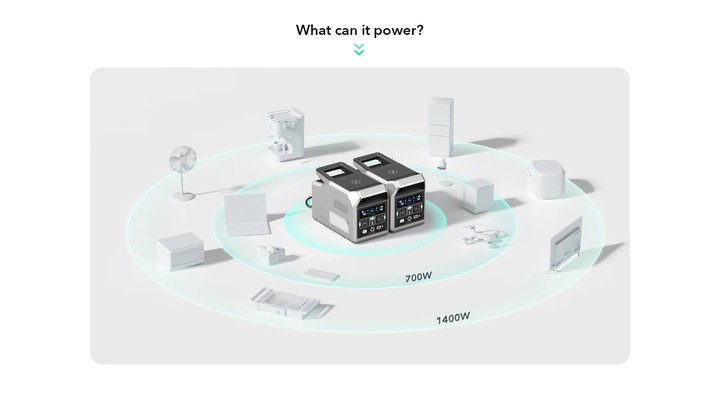
How to Choose a Portable Power Station -The only guide you need
When it comes to portable power solutions, a portable power station stands out as a versatile and reliable choice. Whether you’re planning a camping trip, preparing for emergencies, or simply looking for a convenient power source on the go, choosing the right portable power station is essential. join us as we unleash the power of portable power stations with LiFePO4 battery.
With numerous options available in the market, it can be overwhelming to make the right decision. That’s why we’ve created this comprehensive guide to help you navigate through the process and choose the perfect portable power station that meets your specific requirements.
In this comprehensive guide, we will explore the essential features and benefits of portable power stations, with a particular emphasis on the advantages that LiFePO4 batteries bring to the table.
When choosing a Portable Power Station, what matters most to you?
Price,Features or Capacity?
When it comes to portable power stations, understanding their key features is crucial in making an informed decision. Let’s take a closer look at some of the essential features that make these power stations a reliable and versatile energy solution:
1.Battery Capacity: One of the primary considerations when choosing a portable power station is its battery capacity. The LiFePO4 battery technology offers impressive energy density, allowing for higher capacity within a compact form factor. With a high-capacity LiFePO4 battery, you can power a variety of devices, from smartphones and laptops to portable refrigerators and even power tools.
2.Output Power: The output power of a portable power station determines the devices it can support. Look for power stations that offer multiple output options, such as AC outlets, DC ports, and USB ports. This versatility ensures compatibility with various appliances and gadgets, empowering you to stay connected and productive wherever you are.
3.Portability: True to their name, portable power stations are designed for easy transportation. Consider the weight and dimensions of the power station, as well as the presence of handles or carrying straps. Look for compact and lightweight models that won’t weigh you down during outdoor adventures or emergency situations.
4.Charging Options: A versatile power station should offer multiple charging options to replenish its energy reserves. Look for models that support various charging methods, such as solar panels, car chargers, or traditional AC outlets. This flexibility allows you to recharge your power station using the most convenient and readily available sources.
5.Durability: When you’re relying on a portable power station, durability becomes essential. Seek out power stations built with sturdy materials and rugged construction to withstand the rigors of outdoor use. Additionally, some models feature weather-resistant or splash-proof designs, ensuring their functionality in challenging environments.
6.Price: Finding a budget-friendly option without compromising on quality or essential features.
Don’t Let Price Fool You: Unveiling the True Worth of Portable Power Stations
Confused about the difference between LiFePO4 and Lithium-ion batteries in portable power stations? Discover the distinctions and understand why LiFePO4 batteries command a higher price.
Understanding the differences between LiFePO4 and Lithium-ion batteries is essential when choosing a portable power station. While Lithium-ion batteries may appear more affordable initially, LiFePO4 batteries offer enhanced safety, longer cycle life, better performance in extreme temperatures, and greater stability. Consider your specific power needs, priorities, and budget to make an informed decision that aligns with your requirements. Invest wisely in a portable power station equipped with the right battery technology for a reliable and efficient power solution.
LiFePO4 vs. Lithium-ion battery
The variations in battery chemistry, safety features, cycle life, and performance contribute to the price differences between LiFePO4 and Lithium-ion batteries. LiFePO4 batteries, with their superior attributes and longer lifespan, often command a higher price point compared to Lithium-ion batteries.
| LiFePO4 Battery | Lithium-ion Battery | |
| Chemistry | Lithium Iron Phosphate | ithium Cobalt Oxide, Lithium Manganese Oxide, Lithium Nickel Cobalt Aluminum Oxide, etc. |
| Safety | Exceptional safety characteristics, minimal risk of thermal runaway or fire hazards | Generally safe, but may require additional safety measures and protection circuits |
| Cycle Life | 2000-5000 cycles | 500-2000 cycles |
| Capacity | Lower energy density compared to Lithium-ion batteries | Higher energy density, storing more energy in a smaller and lighter package |
| Performance in Extreme Temperatures | Excellent performance in extreme temperatures, both high and low | Slightly lower performance in extreme temperatures compared to LiFePO4 batteries |
| Price | Generally higher price due to superior characteristics and longer lifespan | Lower price compared to LiFePO4 batteries |
| Application | Well-suited for outdoor, off-grid, and high-demand applications | Widely used in consumer electronics, electric vehicles, and various portable devices |
Advantages of LiFePO4 Battery:
Safety: LiFePO4 batteries exhibit exceptional safety characteristics with minimal risk of thermal runaway or fire hazards.
Long Cycle Life: They can endure a higher number of charge-discharge cycles, typically ranging from 2000 to 5000 cycles.
Stability: LiFePO4 batteries offer a stable and consistent capacity throughout their discharge cycle, ensuring a reliable power supply.
Performance in Extreme Temperatures: They perform well in extreme temperatures, maintaining their capacity and efficiency.
Durability: LiFePO4 batteries are known for their durability and can withstand rigorous use in various applications.
Advantages of Lithium-ion Battery:
Higher Energy Density: Lithium-ion batteries have a higher energy density, enabling them to store more energy in a smaller and lighter package.
Widely Used: Lithium-ion batteries are extensively used in consumer electronics, electric vehicles, and portable devices.
Lower Price: Lithium-ion batteries generally come at a lower price compared to LiFePO4 batteries.
Suitable for Various Applications: They are suitable for a wide range of applications, including smartphones, laptops, power tools, and more.
It’s important to note that the advantages mentioned above are general characteristics, and specific battery brands and models may have variations in performance and specifications. When choosing between LiFePO4 and Lithium-ion batteries, it’s crucial to consider your specific requirements, such as safety, cycle life, energy density, and budget.

Learn about the Lifespan of portable power stations with LiFePO4 battery
What Is The Lifespan Of A portable power stations with LiFePO4 battery?
What are Battery Cycles?
The battery cycle is during which the battery is fully charged and discharged. However, the times of the cycle are limited due to many effects. Therefore, the lifespan of a battery is determined by how many times it can run the cycle so that you can estimate the lifespan of a portable power station through its battery cycle maximum.
It would help if you recognized that charging cycle and charging times are two different concepts. The charging cycle is defined as the number of times that only refers to the process by which the portable power station is charged from zero to full. A charging cycle means that the portable power station is used from full to zero and then is stuffed from empty to full, which is not the same as charging once.
For example, you only use half of its charge on the first day and then charge it fully again. Subsequently, you utilize half of the electric quantity and recharge it again. The portable power station is charged twice, but it only equals one charging circle.
How do Different Types of Batteries affect the Number of Circles?
Lithium Iron Phosphate Battery (LFP): It is a lithium-ion battery with lithium iron phosphate as the cathode material. It possesses moderate working voltage, high capacity per unit weight, and high discharge power rate, which allow it to be charged promptly and have a long lifespan. In addition, it can work stably in extreme conditions, such as a heated environment.
Ternary Polymer Lithium Battery: Ternary polymer lithium battery refers to the lithium battery whose cathode material uses lithium nickel cobalt manganate ternary cathode material or lithium nickel cobalt aluminate ternary cathode material, so this battery is also referred to as NCM battery (lithium nickel cobalt manganate) or NCA battery (lithium nickel cobalt aluminate), whose ternary refers to nickel (Ni), cobalt (Co), manganese (Mn) or aluminum (Au) in the cathode.
Nowadays, according to experimental statistics, the LFP can work more than 3500 times, some of which can be up to 5000 times. In comparison, the Ternary Polymer Lithium Battery can work 2500 times. Therefore, the LFP tends to be more durable and has a longer lifespan than the former and the latter. Furthermore, regarding the residual capacity, the LFP contains more capacity than the Ternary Polymer Lithium Battery when in the same conditions. For instance, the Ternary Polymer Lithium Battery remains 66% room after working 3900 times, while there is 84% capacity left after the LFP has run 5000 times.
Vigorpool Captain Series and Lake 300
Vigorpool’s portable power stations are representative of LFP batteries. There are more advantages that the Vigorpool portable power station can bring.
1. A Longer Lifespan
All the Vigorpool portable power stations are equipped with LFP, giving the products a long-lasting range and longer lifespan. No matter whether Captain 1200 or Lake 300, they are durable and can be used for a long time. You don’t need to consider buying a new one in a short time.
2. UPS Function
The full name of UPS is Uninterruptible Power Supply, which ensures that the devices can keep running when incoming power is severed. The portable power stations of Vigorpool have the most advanced UPS function that provides you and your family with a steady power supply. You don’t need to worry about a sudden power outage that can damage the devices because the UPS functions will maintain the power supply to appliances in less than 10ms.
3. Environmentally Friendly
Captain 700 and Lake 300 are also solar generators. If you combine them with solar panels, they will produce enough electricity for your household use. That will benefit the environment because solar generators don’t use fossil fuels to yield energy and won’t emit any polluted gases into the air. Even if you don’t use them as solar generators, you will observe that they are quiet when working. That will provide you and your neighbor with a tranquil environment, which is also conducive to the environment.
4. Compact and Portable
Captain 700 and Lake 300 are portable power stations that allow you to carry them for a trip or camping. They are both small in size and only take up a little space. Imagine they offer unlimited power when you take families or friends out for a hike or camp; they will undoubtedly juice up the whole journey.
Allows two Captain 700 to be linked together to double the capacity from 672Wh to 1344Wh and the output power from 700W to 1400W
CAPTAIN 700’s parallel connection function is an industry-leading innovation that allows you to connect two units to double capacity and power, providing up to 1400W and 1524WH. This feature ensures a stable power supply to high-power devices, meeting your occasional needs and providing an ultra-long standby time.

Conclusion
Vigorpool has been adhering to the development philosophy of providing people with a better sustainable life. Captain 700 and Lake 300 are the representative product that Vigorpool try to express the effort of their ultimate goal.
Browse our portable power stations to learn more!
Tip:
Vigorpool Captain 700 – Limited Early Bird Price Only $499, Please Fllow The Official Vigorpool® Shop

